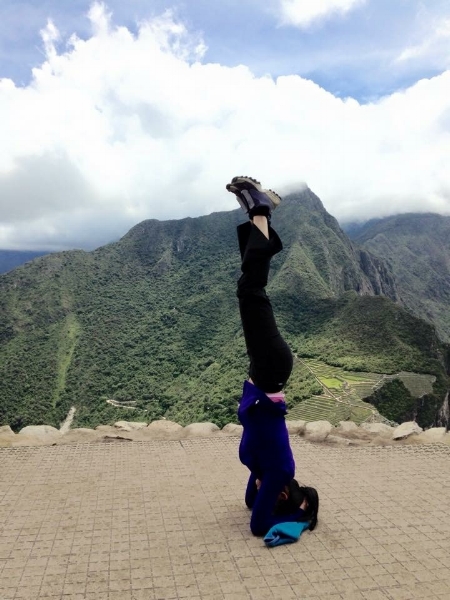Photo credit: Robert Maschke. Headstand by Yan Maschke on the top of Machu Picchu Peru (8000 feet) in December 2014.
Towards the end of a hot yoga class, the instructor Shannon invited us to a headstand or any form of an inversion pose, which means the body is upside down - headstand, shoulder stand, handstand, etc.
I opted for the headstand.
With my head down cupped by my hands and forearms and with bent legs stack up on top of my hips, I started to slowly lift both legs while tightening the core, in a controlled manner.
Shannon’s voice is cutting across the hot air through her microphone:
“Aversions help us change our perspective.”
The room is mostly quiet, with everyone working on whichever pose they opted for.
Blood started to flow down to the head as I reached the full pose. I relaxed the breathing and tried to feel the unique experience of the moment.
We all feel stuck at times. Often, changing the perspective is what helps us through those moments.
With a perspective change, some of the benefits are:
Seeing the lesson vs fixating on the problem.
Turning from a victim to a creator.
Focusing on the ultimate desired outcome vs. the dauntingness of the one-and-only solution we bang our head against.
While we know it’s helpful to expand and shift perspectives cognitively, it’s hard to embody that practice in daily life.
As Bruce Lee properly quoted, practice is everything.
“Under stress, We don’t rise to the level of our expectations, we fall to the level of our practice.” - originally an ancient Greek quote
How to get started in daily practice without procrastinating or feeling overly daunted?
“Think big and act small.”- author and business speaker Jason Jennings
What are some small actions you can take to practice perspective change in an embodied way? Some quick ideas below:
Take an alternative commuting route to work
Brush your teeth with your non-dominant hand
Ask yourself: “What’s the lesson here?”
Ask others on the team: “What’s another way to look at this issue?”
How might a change of perspective help you expand your leadership impact in general and address a pressing challenge in particular?
What ideas will you add and practice?


